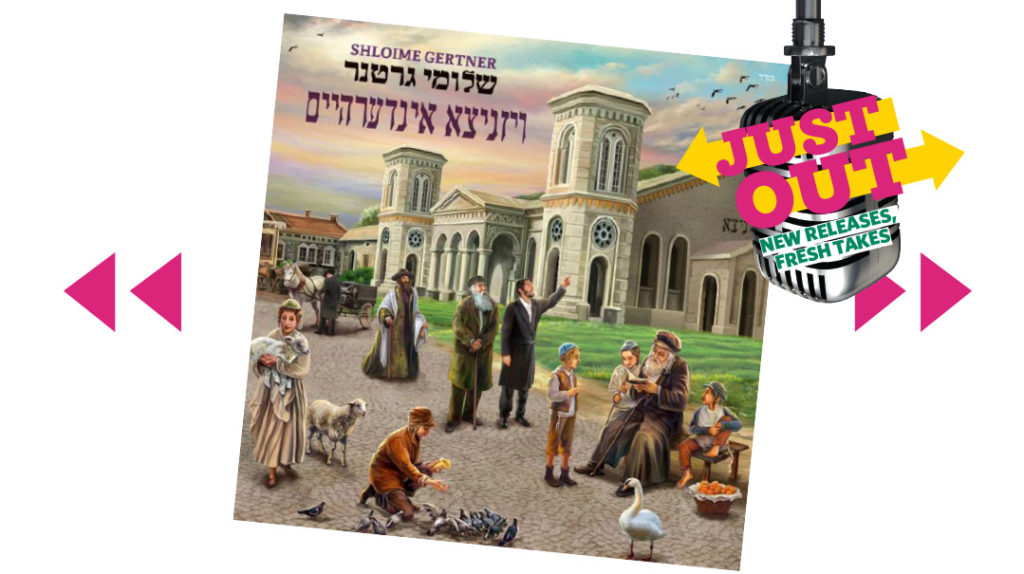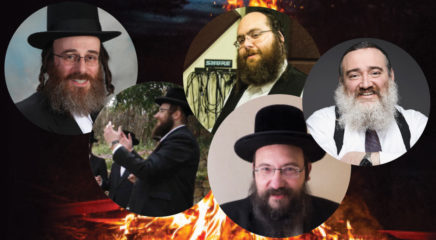“I had to pull over on the side of the road for 20 minutes because I felt like I was at the tish”
Slaking the post-Three-Weeks thirst for music, SHLOIME GERTNER’s newest album, VIZHNITZ INDERHEIM, transports listeners to some of the most special moments in the world of the Vizhnitz court.
“A friend called to tell me he played Vizhnitz Inderheim during a family road trip on vacation,” Gertner relates, “and he told me, ‘I had to pull over on the side of the road for 20 minutes because I felt like I was at the tish.’”
Some of the songs, such as the famous Vizhnitz Sixth Hakafah tune, are universally known, and help introduce the mainstream listener into the rich world of niggunim of the chassidus. “In der heim” [at home] has a double meaning, referring both to the fact that the songs are sung on Shabbos in Vizhnitz homes worldwide, and colloquially to their origins in prewar Vizhnitz.
In the fifth track, the “Lechtiger Shabbos Medley,” Gertner harmonizes to a child soloist — himself — as a 12-year-old singer on one of the Vizhnitz albums.
“I had these solo recordings in my library, and about a decade ago, I decided to record a medley integrating them," says Gertner. "The project was shelved until a few months ago when I bumped into David Taub, a music producer and arranger who is the son of Akiva Taub of the Vizhnitz choir. His enthusiasm reignited the project and brought it to fruition.”
Vizhnitz has a lonh and rich heritage of song, with some tunes composed by the rebbes themselves. The tune of the slow song “Avorcho” is actually an old prewar niggun, the words having been set to it by the Imrei Chaim of Vizhnitz. Gertner explains that the well-known “Sabeini,” which is sung on Shabbos morning at Kiddush in Vizhnitz, actually originated in Breslov, although it is long associated with Vizhnitz.
Another song, “Mizmor LeDovid,” was a gift of Gerrer composer Yankel Talmud, who would occasionally spend Shabbos with the Imrei Chaim of Vizhnitz.
“He sang this tune to Mizmor LeDovid at Shalosh Seudos and the Rebbe asked if he could have the song,” Gertner explains. “Yankel Talmud agreed, and since that time, the tune is a stable of the Vizhnitz Shalosh Seudos tish, although the Vizhnitz version is shorter than the version sung back in Gur. This summer, I sang at an event in Romania with the Neranena Choir, whose members are Gerrer chassidim, and when I finished the song, they all continued for another few phrases, singing bars which no Vizhnitzer chassid could sing along to, because they wouldn’t know it.”
While “Zochor Chasdo” (Track 1) and “Shimcha Na’eh” (Track 3) are sometimes requested at weddings, the “Shavuos Niggun” (Track 12) is traditionally sung only on Shavuos night.
“It’s a special moment when everyone has stayed up through the night and finished saying Tikkun Leil Shavuos,” says Gertner. “They come out into the front yard waiting for dawn and the Rebbe comes outside, and then the Shavuos niggun is sung. Any chassid who has spent Yom Tov with the Rebbe can feel himself in that special time and place when he hears the niggun.”
Even the front cover artwork — a painting of the Vizhnitzer hoif of the Ahavas Yisrael in Grosswardein — gives the album a stamp of tradition, and the welcome feel of heartwarming tunes for every Yid.
MY FAVORITE YIDDISH SONG
“A Yiddele,” composed by Isaac Honig, has always been very special to me. I just love that song, with its powerful message. A Yid can look down at his own insignificance, his sins, his distance, or he can look at how beloved and important he is to Hashem, realize that Hashem looks at him like an only child and waits for his tefillos and wills him to keep going. And that will keep him strong. “A Yiddele, a Yiddele, shtark zich, shtark zich, Yiddele…”
–DOVI MEISELS
(Originally featured in Mishpacha, Issue 926)






